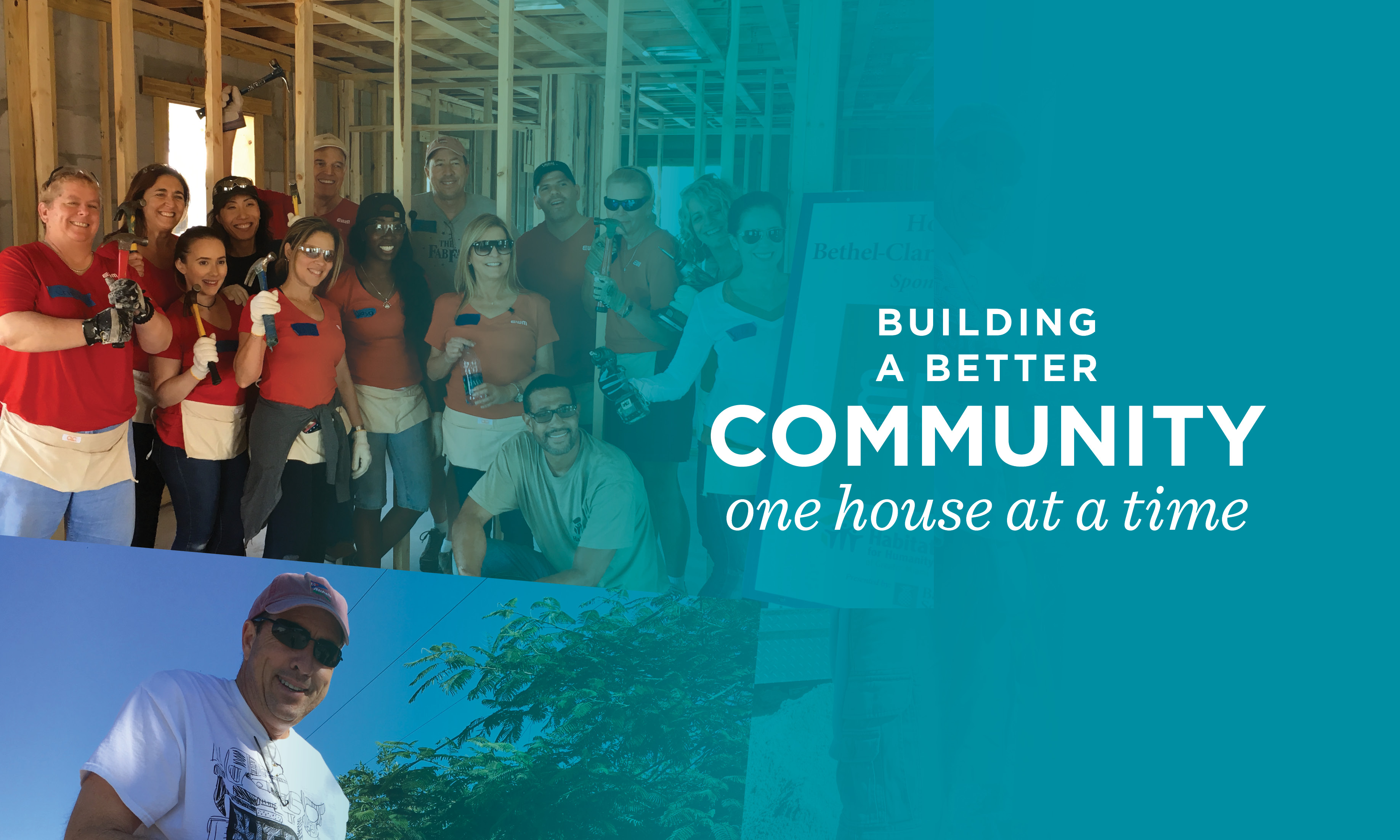Miami broker Thomas Byrne of Berkshire Hathaway HomeServices EWM Realty got involved with Habitat for Humanity 15 years ago, after being inspired by a mentor who did volunteer work in Haiti. “I decided to surround myself with people I wanted to be like,” he said.
Today, Byrne serves as chairman of Habitat for Humanity of Greater Miami, which is currently celebrating its 30th anniversary. During those 30 years, the organization has built an astounding 1,200 homes in Dade County, making them one of the top Habitat affiliates in the entire country.
Despite this accomplishment, and their ability to deliver 32 homes a year, the organization cannot come close to solving the lack of affordable housing problem in Miami, said Byrne. “When you see the demand for these homes, you see how many people aren’t even coming close to being qualified. It’s a sad situation,” he said.
According to Byrne, families have to meet strict criteria in order to qualify for a Habitat home, including employment and credit requirements. “It’s a hand up, not a handout,” he said. “Once we get the land (usually donated by the county), we go to the local churches and publish an ad inviting people to apply. Then staff and volunteers do home visits and meet the families. There’s lots of need for low-income housing, but it’s challenging to find people who are qualified and willing to work. “
In Miami, it costs approximately $130,000 to build a Habitat home on donated land. The homeowners pay this money back over 30 years, interest free, and put in 300 hours of sweat equity into their home or a neighbor’s home. This formula allows Habitat to keep the money — and houses — rolling out.
According to Byrne, infrastructure costs in Miami can be astronomical, especially when compared to other markets. “Miami is a different animal,” he said. “We do a lot of large group homes — like Jordan Commons, a development that was abandoned after Hurricane Andrew, or Habitat Landings, a large tract of approximately 50 homes that took almost five years to build. Bringing water to a tract of homes can cost $200,000 or more. We can’t just drill a well. It’s quite an undertaking.”
The work itself can be equally challenging. “I was always extremely handy, but that doesn’t make it any easier,” Byrne said. “The hardest jobs are flooring or roofing, but I haven’t found an easy one yet. I’d have to say my favorite is drywall. It takes a little bit of precision, but at the end of the day you have an interior, which is very rewarding. “
The actual builds are usually done over the course of 10 to 20 days per house, with trades being done by electricians or plumbers. The rest is done by volunteers who are supervised by a contractor. “They have it down to a science, whereby volunteers can step in and quickly assemble the house,” he said. “We’re one of the few affiliates that has to use concrete block structure, so when we start, there’s a shell of a house there.”
Byrne estimates about 1,000 agents from his brokerage come out for the builds that Berkshire Hathaway HomeServices EWM Realty sponsors for $75,000. “There’s always a waiting list to get on those builds,” he said. “Agents love the fact that we’re in the housing business, so it’s a great way to give back. It really adds to the quality of the profession by having a joint mission. I have a Habitat baseball cap, and whenever I wear it, people stop me all the time. They want to be involved.”
Companies don’t have to sponsor an entire build – they can pay $4,000 for a one-day team build, and individuals can fill out an online application and volunteer anytime. Volunteers are especially needed in the spring, during Habitat for Humanity of Greater Miami’s annual blitz, when they build 10 homes in two weeks. “It’s a lot of fun,” Byrne said.
It’s also deeply important work. “I look at having a home as the first step to solving every problem in society,” Byrne said. “Nobody cares about the environment if they’re insecure about housing. Nobody can get their kids to do well in school if they don’t have a place to stay. The work we’re doing is alchemy — making something out of nothing. And it will have generational impact on the families involved.”
In fact, a recent study conducted by UNC Charlotte Urban Institute, The Effect of Stable Housing on Educational Outcomes and Childhood Well-being, researched the effects of obtaining homeownership through Habitat for Humanity and its impact on childhood well-being. The study confirmed the profound impact of stable housing on childhood and family outcomes, finding that:
- Living in a Habitat home significantly improves kids’ educational outcomes
- Habitat students missed less school and encountered fewer problems while at school
- Families living in Habitat homes reduced their reliance on social services
- Families felt that living in a Habitat home both strengthened familial relationships and improved their lives
For Byrne, one of the most rewarding aspects of working on a Habitat home is the dedication ceremony. “It’s very moving,” he said. “That’s when we finally get to see the family’s children, because children aren’t allowed on site during the builds. So you see the kids picking out their bedrooms and running through the house.”

